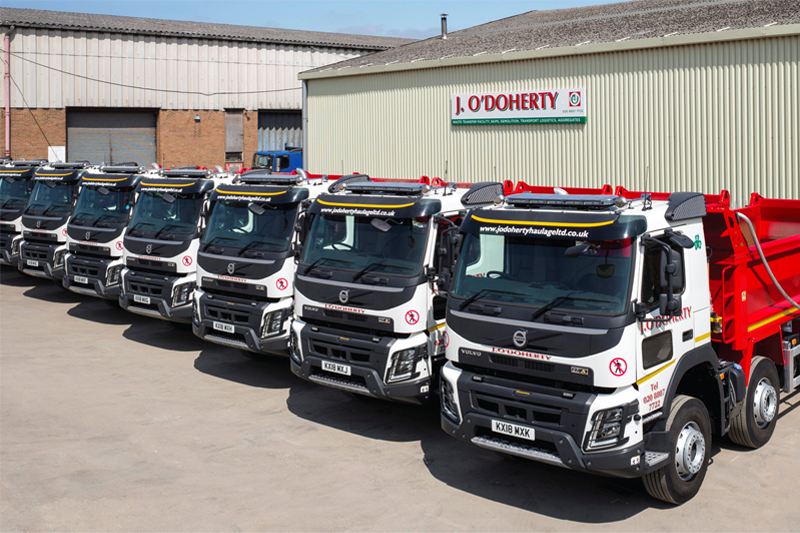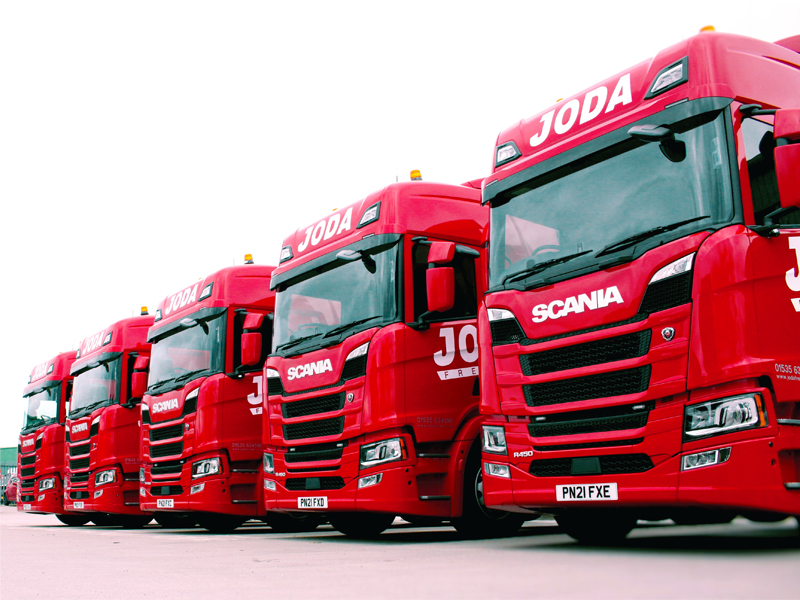
Safety cameras are an essential tool in fleet management, providing fleet managers with a valuable resource for monitoring driver behaviour, reducing accidents, and improving overall safety. CVW examines how three fleet managers have deployed various systems to maximise their fleets’ performance.
With safety cameras installed in commercial vehicles, fleet managers can monitor driver performance and identify areas for improvement, helping to reduce the risk of accidents and minimise liability costs. In addition to providing an objective record of accidents and incidents, safety cameras can also act as a deterrent to dangerous driving habits, helping to prevent accidents before they happen. With the ability to review footage in real-time and receive alerts when unsafe conduct is detected, fleet managers can take swift action to ensure the safety of their drivers and the general public.
In fact, some public authorities are likely to prescribe safety cameras for that very reason. In a move that shows how safety cameras are now an accepted part of any safety regime, Transport for London (TfL) has suggested that the Progressive Safe System (PSS) that comes into force in October 2024 will require mirror-replacement camera monitoring systems (CMS) to be fitted in order to eliminate any remaining blind spots at the nearside.

TfL regulations to be introduced from October 2024 state that all HGVs over 12 tonnes must be minimum ‘3 star’ rated under its Direct Vision Standard, which rates production line HGVs for the standard of visibility from the cab. Those that do not meet this standard will need to retrofit a PSS to their vehicles in order to obtain an HGV safety permit. Without this, it is illegal to enter and operate in Greater London and the penalties are £550 for the operator and £130 for the driver. The PSS requirements have yet to be decided as consultation has only just ended but should be known by summer 2023.
Live feed
Meanwhile fleet managers have found safety camera systems a useful addition to their toolkit, one that they are prepared to invest. Enva, a waste management and resource recovery solutions provider, has recently upgraded its safety camera system to take advantage of live streaming technology. The company has been using safety cameras for over five years to enhance driver safety and provide evidence of incidents on the road. The move to live streaming provides even greater protection for Enva’s drivers, allowing the fleet manager to remotely access live footage from any camera on any truck. This technology enables Enva to manage its vehicles more effectively by providing live GPS tracking and location data, as well as updates on camera status.
“It has proved invaluable to us,” Alan Jackson, Enva’s fleet maintenance supervisor with responsibility for Scotland, commented. He opted for the streaming technology developed by Durite, known as Durite Live. “We decided to move to Durite Live to provide quicker access to that footage and even better protection for our drivers. This could be a collision or even something as simple as providing proof to a client that we had visited their site on a specific date and time to collect waste.”

Camera systems can also be tailored to fit specific purposes and industries. For example, London-based waste specialist J O’Doherty Haulage needed a higher definition camera system that would give their drivers and fleet managers all-round vision of their vehicles.
“We wanted the new system to give both our drivers and fleet managers all-round vision of the vehicle and have the option to add on more cameras if needed,” Matthew Tyler of J O’Doherty Haulage said.
His solution was to buy more than 100 eight-channel HDD DVR (hard disk drive digital video recorder) kits from Durite. Compared to a four-channel camera system, the eight-channel kit increases visibility, particularly when monitoring vehicle operations such as tipping.
Host of applications
To ensure complete coverage, one camera is mounted looking out from the cab, while a dome camera monitors the inside of the cab. Another camera is mounted at the rear to assist the driver when reversing, and more cameras on each side of the vehicle provide full coverage when turning.
The high-definition camera system and its strategic placement offer drivers better vision and control, improving safety and reducing the risk of accidents. It also provides fleet managers with real-time information that can help optimise fleet management and improve operational efficiency. The adaptability of the camera system highlights how safety cameras can be adapted for different purposes to suit a company’s specific needs.
Another haulier looking to address specific vision and monitoring challenges is Joda Freight, a UK-based logistics and haulage services provider that faced challenges in vehicle safety and security. Technical director Neil Tullett said: “The camera safety system needed to provide photo and video evidence in the event of an accident, attempted fuel theft or vandalism, as well as help us deal with false insurance claims and scammers.”

The answer was a 4G-enabled 4CH DVR monitoring system integrated with a side scan detection system with left turn alarm, which is a requirement for DVS. The system, which was customised to Joda’s needs by Durite, includes a customised external alarm that activates the DVR and starts recording automatically, while at the same time the alarm goes off to deter would-be thieves.
As artificial intelligence becomes more sophisticated it will be incorporated into the safety camera systems available, providing ever more data that will enable fleet managers to maximise the potential of both their fleet and their drivers.









